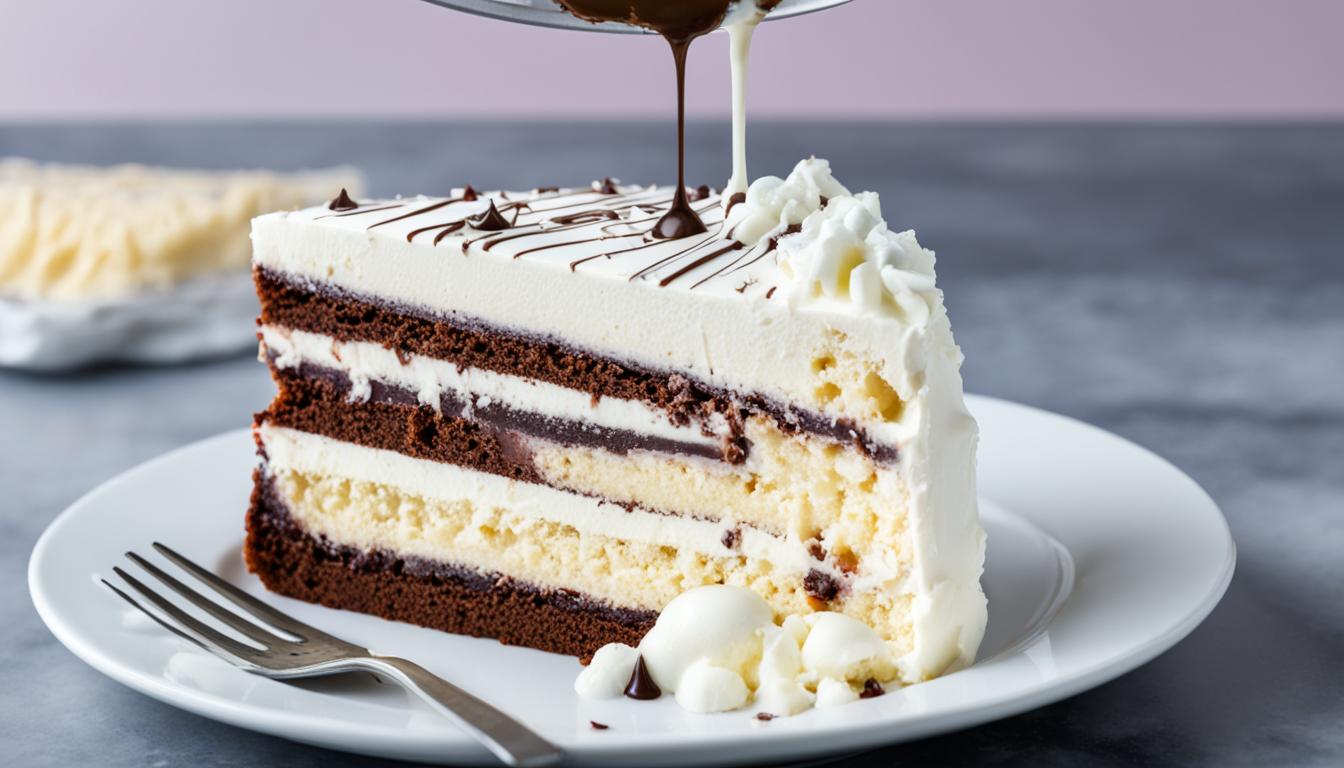Ice cream doesn't technically expire, but its quality can drop over time. If you store it properly at 0°F (-18°C), commercial ice cream can last about 2-4 months, while homemade varieties are best within a month. After that, you might notice signs like ice crystals or off odors, which indicate spoilage. Even if ice cream is okay to eat, the texture and flavor may suffer. Be mindful of freezer burn, which can alter the taste. Interested in how to keep your ice cream fresher for longer? There's more to discover about ideal storage and spoilage signs.
Key Takeaways
- Ice cream has a best-by date but can remain safe to eat for months if stored properly in the freezer.
- Commercial ice cream lasts 2-4 months, while homemade ice cream is best consumed within a month.
- Signs of spoilage include ice crystals, strong odors, and a gooey texture, indicating it may not be safe to eat.
- Opened containers of ice cream can stay fresh for about 6 weeks when kept at or below 0°F (-18°C).
- Quality may decline after the best-by date, but ice cream can still be consumed if it shows no signs of spoilage.
Understanding Ice Cream Expiration
Understanding Ice Cream Expiration
When you buy ice cream, you might wonder how long it actually lasts. While it does have an expiration date, properly stored ice cream can still be safe to eat past that date.
Commercial ice cream typically lasts 2-4 months in the coldest part of your freezer, while homemade ice cream should be consumed within a month for peak quality. To guarantee food safety, keep your ice cream at a consistent temperature below 0°F (-18°C) and store it in airtight containers. This helps prevent freezer-burned ice cream, which can develop unsightly ice crystals and a less appealing texture.
As with other products, understanding the importance of security measures can help protect your food from contamination. Signs of spoilage include noticeable ice crystals on the surface, strong odors, and a gooey texture, indicating potential bacterial growth.
Though it might be tempting to indulge in that pint sitting in the back of your freezer, remember that the risk of spoilage increases over time. If you notice any signs of deterioration, it's best to toss it out.
Ultimately, enjoying your ice cream sooner rather than later is key to experiencing its best flavor and texture.
Shelf Life of Ice Cream

Ice cream typically has a shelf life of 2 to 4 months in the coldest part of your freezer, depending on whether it's store-bought or homemade.
Commercial ice cream can last around 2 to 4 months, while homemade ice cream is best enjoyed within a month to maintain its quality. The storage conditions play an essential role in determining how long your ice cream stays fresh.
To guarantee peak freshness, consider how diversification of retirement portfolio can parallel the importance of variety in ice cream flavors.
If you've opened a container, you can expect it to remain fresh for about 6 weeks at 0°F. Unopened ice cream can last longer, staying fresh for 2 to 3 months under the same conditions.
However, keep in mind that even if ice cream remains safe to eat after its best-by date, its quality deteriorates over time.
To help preserve your ice cream, always use airtight containers and minimize its exposure to air. This practice not only prevents freezer burn but also keeps the flavor and texture at their best.
Signs of Spoilage

Although your ice cream might look fine at first glance, several signs can indicate spoilage that you shouldn't ignore. It's crucial to check for these warning signs to guarantee your treat is still safe to eat: Cats can also exhibit signs of stress during changes in their environment, which can include shifts in routine such as the consumption of unusual foods like ice cream, making it important to be aware of their reactions to different treats cat health and dietary considerations.
- Ice Crystals and Freezer Burn: If you notice ice crystals on the surface, it's a sign of freezer burn. While it affects texture and taste, it doesn't necessarily mean the ice cream has expired.
- Gooey Texture and Ice Shards: A gooey texture combined with ice shards can suggest spoilage and possibly bacterial growth. If you encounter this, it's better to avoid eating it.
- Strong Odors: If your ice cream emits strong odors, it may have been contaminated by nearby foods. This is a clear indication that it's no longer safe to eat.
Keep in mind that while the best-by date isn't an expiration date, consuming ice cream past that date can lead to quality decline.
Always trust your senses—if something feels off, it's wiser to err on the side of caution.
Safe Storage Practices

To keep your ice cream fresh and delicious, proper storage practices are essential. First, always store your ice cream in the coldest part of the freezer, usually at the back. This helps maintain a consistent temperature and extends its shelf life.
Use air-tight containers to minimize exposure to air and moisture. This prevents freezer burn and preserves its good texture.
Keep the plastic safety seal on store-bought ice cream until you're ready to dig in. This seal helps maintain freshness and safety.
Additionally, avoid frequently opening the freezer. Temperature fluctuations can cause your ice cream to thaw and refreeze, negatively impacting its quality and texture.
Make certain your freezer is set to a temperature consistently below 0°F (-18°C). This low temperature effectively slows bacterial growth, keeping your ice cream safe and fresh for a longer time.
Impact of Freezer Burn

When ice cream is exposed to air, it can develop freezer burn, which negatively impacts both its texture and flavor. This happens due to moisture loss and the formation of ice crystals on the surface.
While ice cream with freezer burn is safe to consume, the altered taste and texture can greatly diminish your enjoyment. Here are three key points to evaluate:
- Storage Matters: Always use airtight containers to store your ice cream. Proper storage helps minimize air exposure, reducing the chances of freezer burn.
- Coldest Part: Keep your ice cream in the coldest part of the freezer, ideally at or below 0°F (-18°C). This helps maintain its quality and prevents temperature fluctuations that can lead to freezer burn.
- Improving Consumption: If you notice ice crystals, you can scrape off the freezer-burned layers to improve the flavor of the remaining ice cream. This allows you to salvage your treat, even when freezer burn occurs.
Enjoying Ice Cream Beyond Expiry

Ice cream lovers often wonder about the safety and quality of their favorite frozen treat beyond its best-by date. If you've stored your ice cream properly at consistently low temperatures, it can last longer than that date—sometimes several months.
However, while it may still be safe to consume, the quality, flavor, and texture can decline considerably after about six weeks.
It's best to consume opened ice cream within 7-10 days of opening, even if it hasn't expired. Before indulging, check for signs of spoilage. If you notice strong odors, an icy or sticky exterior, or large ice crystals, it's a good indication that your ice cream has gone bad.
To enjoy your favorite frozen treat safely, consider immediate consumption after the expiry date. By keeping ice cream stored correctly, you can minimize risks associated with prolonged storage and potential bacterial growth.
Frequently Asked Questions
Can I Eat Expired Ice Cream?
You can eat expired ice cream if it's been stored properly, but check for signs of spoilage like strong odors or ice crystals. If it seems off, it's best to toss it out.
How Do You Know if Ice Cream Has Gone Bad?
You might find yourself craving ice cream, but check for ice crystals, gooey textures, or strong odors first. If it looks sticky or thawed, it's best to toss it and avoid potential illness.
Can Frozen Ice Cream Go Bad?
Yes, frozen ice cream can go bad. If you notice ice crystals, a weird texture, or odd smells, it's best to toss it out. Proper storage helps, but even frozen treats can spoil over time.
Can Ice Cream Last for 2 Years?
Can ice cream really last for two years? While it might be safe to eat after that time, you'll likely notice a decline in flavor and texture. Enjoy it within a few months for the best experience!
Conclusion
In summary, while ice cream doesn't exactly expire, its quality can decline over time. By practicing proper preservation, you can savor your sweet scoop longer. Stay savvy and spot signs of spoilage, like strange smells or icy textures. Embrace enjoyment, even with a hint of freezer burn, but always prioritize safety. So, when it comes to that delicious dessert, plunge into delightful decadence, but don't hesitate to ditch if it doesn't delight your taste buds anymore! To ensure your ice cream stays at its best, invest in proper ice cream freezer storage. This will help maintain its texture and flavor for a longer period of time. Remember, indulging in a perfectly preserved pint is always a treat worth savoring.










